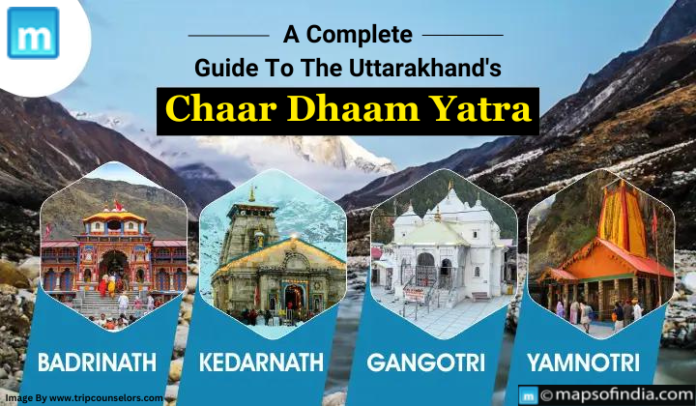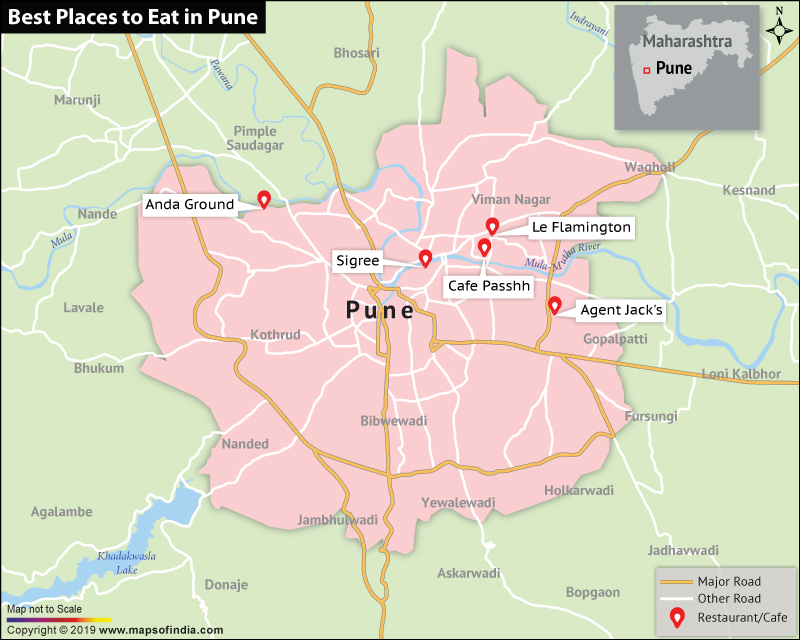In the middle of the beautiful Himalayas lies the Chaar Dham, commonly known as “Chota Chaar Dham”, a sacred pilgrimage circuit. The Char Dham Yatra, which translates as the pilgrimage of the four abodes, is a sacred trip for devoted Hindus. It is a spiritual journey through stunning landscapes and historic temples, taking in four Himalayan shrines: Yamunotri, Gangotri, Kedarnath, and Badrinath. Pilgrims worldwide travel to this sacred site to seek blessings, purify their spirits, and achieve spiritual enlightenment. In this comprehensive Chaar Dham travel guide, we delve into the heart of this spiritual journey, providing insights into each of the respected places.
Understanding the Dhams
-
Yamunotri
The journey starts in Yamunotri, Uttarkashi, Uttarakhand. At an altitude of 3,293 meters, it is renowned as the source of the Yamuna River, which flows from the Champasar Glacier.
-
Gangotri
The pilgrimage circuit’s next stop is Gangotri, located in Uttarkashi, Uttarakhand. At an altitude of 3,100 meters, Gangotri is considered the birthplace of the famed Ganga River.
-
Kedarnath
Pilgrims continue their spiritual journey by visiting Kedarnath in Uttarakhand’s Rudraprayag area. Kedarnath, located at 3,583 meters in the Garhwal Himalayas, is Lord Shiva’s dwelling.
-
Badrinath
The final destination of the Chaar Dham pilgrimage is Badrinath, situated in the Chamoli district of Uttarakhand. Perched at an altitude of 3,133 meters, Badrinath is revered as the abode of Lord Vishnu in his form as Badrinarayan.
Planning Your Pilgrimage
-
Season
Owing to snowfall, the shrines open in April or May and close in November. Choose a time that is appropriate for your fitness level. April-May has good weather, while September-October has fewer crowds.
-
Duration
A whole yatra lasts typically 10-12 days. However, shorter itineraries focused on individual dreams are feasible.
-
Registration
A Char Dham Yatra registration (e-yatra permission) is mandatory.
-
Travel Options
Road travel provides a magnificent experience, but be prepared for slippery mountain roads. Helicopter trips are faster but more expensive.
Understanding The Journey
Traditionally, the yatra begins at Yamunotri and travels clockwise. Here’s a look at each dham:
-
Yamunotri
Pilgrims undertake a rigorous trek approximately 6 kilometers from Janki Chatti to reach the sacred temple dedicated to Goddess Yamuna. The serene ambience, surrounded by snow-capped peaks and gushing streams, instils a sense of tranquillity and devotion.
-
Gangotri
Pilgrims embark on a spiritual journey to the Gangotri temple, dedicated to Goddess Ganga. The temple’s architecture, adorned with intricate carvings and surrounded by the majestic Himalayas, evokes a sense of reverence and awe. The sacred Aarti performed on the banks of the Bhagirathi River is a soul-stirring experience, resonating with divine energy.
-
Kedarnath
Pilgrims undertake a challenging trek approximately 16 kilometres from Gaurikund or opt for pony or palanquin services to reach the sacred shrine. The Kedarnath temple, surrounded by snow-clad peaks and lush greenery, exudes an aura of mysticism and devotion. The divine presence of Lord Shiva is palpable, offering solace and spiritual upliftment to devotees.
-
Badrinath
Pilgrims journey to the sacred Badrinath temple, nestled amidst the breathtaking Himalayan landscape. The temple’s architecture, adorned with intricate sculptures and surrounded by towering peaks, epitomizes spiritual grandeur and serenity. The holy dip in the Tapt Kund, believed to have medicinal properties, purifies the soul and bestows blessings upon devotees.





